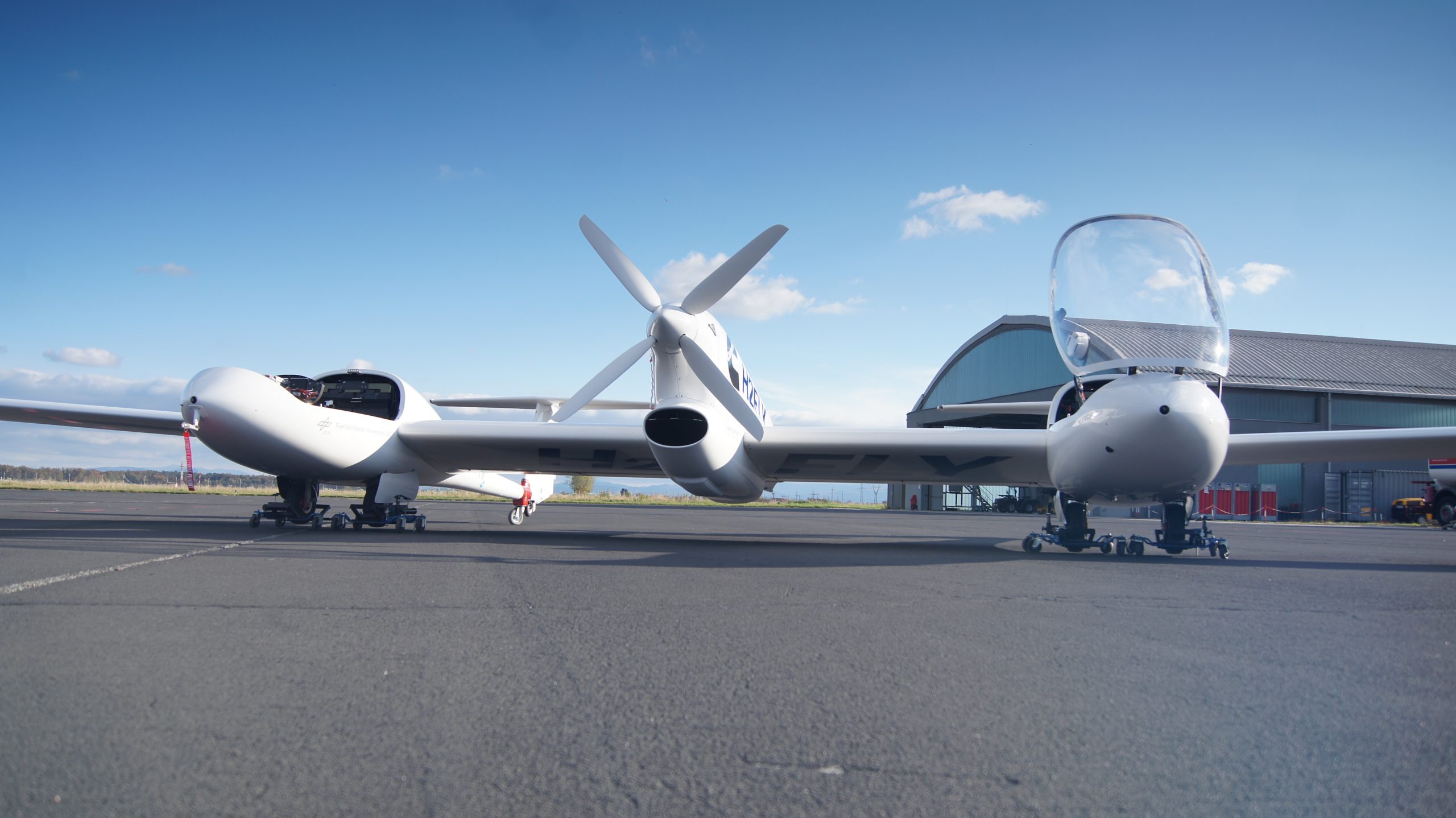
The scientists behind the hydrogen-powered HY4 aircraft feel a little like the aviation pioneers of 100 years ago who dreamed of commercial aircraft capable of carrying large numbers of passengers over long distances. Just after World War I, it all seemed like science fiction, but ten years later it was the most normal thing in the world.
Ten years, that’s the timeframe that Josef Kallo and his team from the German Aerospace Center (DLR) and the University of Ulm (also in Germany) have in mind for their revolution in the aviation industry.
When they first flew the HY4 into the sky for a demonstration in 2016, the plane could not do much more than take off and land. The flight lasted 15 minutes. Now, with the improved HY4 that was presented last Friday in Stuttgart, four people can already use it in two cockpits, and it has a license for test flights across Europe.

2025 and 2030
Kallo believes that he can show the world the next breakthrough within three to five years Yet the really significant step will come around 2030 with an airliner for 40 to 80 passengers that can fly 2000 kilometers from Berlin to Madrid on one tank of green hydrogen.
The German Minister of Transport Andreas Scheuer was visibly impressed by Kallo’s start-up H2Fly on Friday. “What comes from this can change mobility.”
Scheuer sees opportunities especially for transport over shorter distances between large cities. “This invention gives Germany an invaluable jump-start in a highly technological sector.”
ZeroAvia
That’s not entirely true, because there are more companies working on hydrogen-powered airplanes. The most direct competitor is ZeroAvia from Great Britain, which has built a hydrogen airplane for six people. A test flight covering 400 kilometers is planned for this month for their modified Piper-M equipped with a propeller.
And then, of course, there are big players like Airbus. They realize that in order to achieve the Paris climate targets, the CO2 emissions of airplanes will have to be reduced considerably. Which is why they set up the Airbus project at Airbus.
The ZeroAvia flight earlier this year: https://youtu.be/h1QQ_TQpGmE
But Airbus is not just putting its money solely on hydrogen. It is also looking at electric powertrains using batteries and solar cells. Airbus hopes to have a hydrogen-powered aircraft ready by 2035. But all of these manufacturers still have plenty of problems to overcome before then.

Numerous obstacles
To start with, there has to be enough green hydrogen, which is also affordable. This is not the case at present. Relatively small amounts of green hydrogen are being produced. Moreover, a solid infrastructure is lacking.
However, billions of euros in investment are planned in the EU to remedy these problems over the years to come.
Secondly, aviation is not the most self-evident consumer of hydrogen. First comes shipping, road freight, and the railways. Great progress is being made across all these sectors. The absolute frontrunner is Japan, which announced last week that it wants to support the hydrogen industry to the tune of 19 billion US dollars. The Japanese want to have so much hydrogen by 2030 that 30 nuclear power plants can be replaced.
Propeller-driven airplanes
But there are no electrical motors yet that can power propellers for large commercial aircraft. Besides that – even if you did have them – they constitute a heavy ballast that has to be carried.
The same goes for battery-powered electric planes. Most experts agree that hydrogen ultimately offers more prospects for commercial aviation than batteries.
Read our hydrogen dossier here and watch the H2Fly video here:

